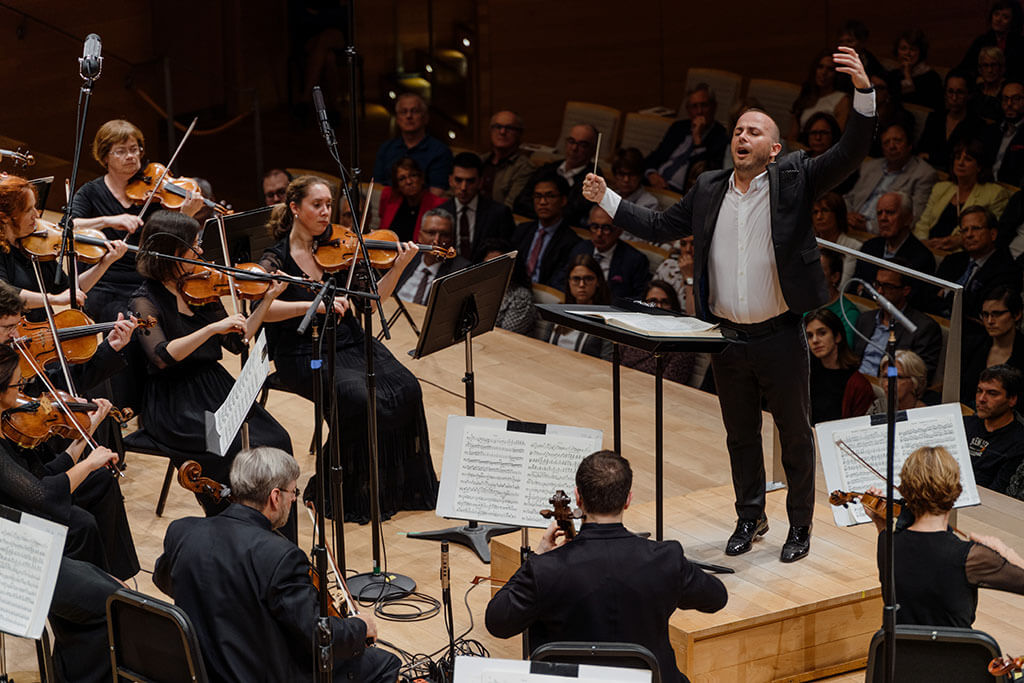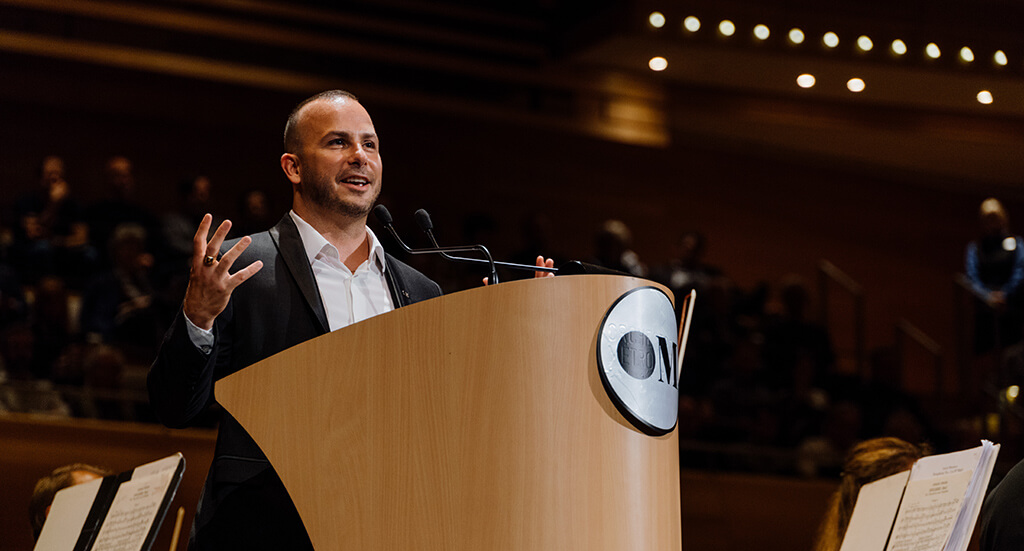
MONTREAL — The international exploits of Yannick Nézet-Séguin are so dazzling we are apt to overlook what he achieves in his home town. All he did Thursday in the Maison symphonique was complete a cycle of Bruckner’s positive-integer symphonies with the Orchestre Métropolitain by giving the first Montreal performance of the Fifth since 1989.
If this 80-minute colossus is not the least performed of the Bruckner brood, it is probably the most feared, mostly because of the exhausting fugal finale but also the start-and-stop character of the first movement, in which contrasts between loud and soft are made doubly startling by unusual key relations.
The conductor referred to these in his reverential spoken introduction, while also invoking the standard metaphor for Bruckner symphonies—the cathedral. I do not hesitate to call this wonderful performance Gothic in its architecture but would prefer to discuss its success in teleological terms. Idea followed idea in the first movement not only with logic but with drama. Solemn hymn led to majestic fanfare and agitated crescendo and grandiose chorale—all in the first 50 bars. Then things got really interesting! Narrative never flagged, and narrative created the imposing structure.
Of course the achievement was due substantially to the calibre of the playing, which, in turn, was due to Nézet-Séguin’s understanding of how to get the best from his players. Gestures were relatively economical, a good sign. Brass ensembles were impressive by virtue of breadth rather than volume. Coming on too strong too early is a bad thing in Bruckner.
Woodwinds commented sweetly. Principal oboe Lise Beauchamp combined expressive curvature with penetrating sound at the start of the Adagio. But the real glory resided in the strings, which entered so grandly in C major in this movement, and elsewhere disported themselves with a warmth and dignity that many a blindfolded connoisseur would confidently identify as central European.
This quality was not confined to the hymnal passages but also the Fifth’s many pizzicato episodes, which need to be resonant rather than plucky. Yet there was bite where there needed to be in the Scherzo.
This movement had its proper invigorating effect, but time must be made to discuss the infamous 25-minute finale. Full marks for the opening, in which Bruckner brings back earlier material in the manner of Beethoven’s Ninth. We could admire the bracing contrasts between grand brass and whispering strings. Almost full marks for the ensuing counterpoint, where only once or twice did the process seem a touch effortful. At any rate, redemption awaited in the coda, with all hands on deck and fortissimo prevailing.
This was not only a live performance but a recording session. The program began with Richard Strauss’s occasionally trotted-out Burleske for piano and orchestra. Angela Cheng, whom we should hear more often, was in the starring role. The fact that only her romantic solo cadenzas commanded interest is fair evidence that rehearsal for this number was limited. The timpani principal who played quiet tremolos so artfully in the Bruckner sounded fuzzy and out of tune. Perhaps his mind was on the task to come.

There was a ceremony at the start of the evening, as YNS was given the Oskar Morawetz Award for Music Performance, conferred by the Ontario Arts Council in honour of the late Czech-born (and redoubtably tonal) Toronto composer. The conductor said some appropriate words about Morawetz, who should not be forgotten.
For more REVIEWS, click HERE.
- SCRUTINY | Moussa Concerto Sounds Strong In Toronto Symphony Orchestra Premiere, Paired With Playful Don Quixote - April 4, 2024
- SCRUTINY | Esprit Orchestra At Koerner Hall: Ligeti 2, Richter No Score - April 1, 2024
- SCRUTINY | Sibelius & New Cello Concerto By Detlev Glanert Offers A Mixed Bag From The TSO - March 28, 2024



